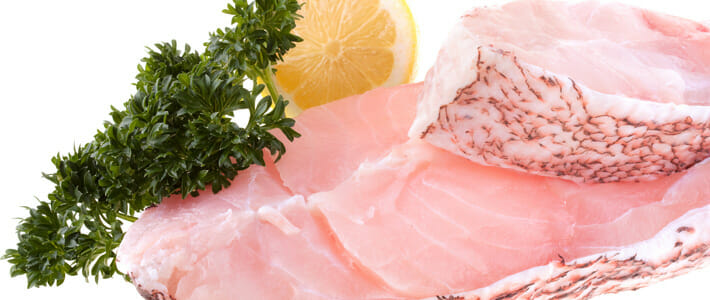Grouper

Grouper are characterized by heavy bodies, big heads, and large mouths. The red sand blacks are the most commonly traded grouper in the U.S. Red grouper is smaller than the black because they don’t live as long, yet they are more abundant and are superior in taste to the black variety. Blacks are less common and are often substituted by a close relative “gag.”
Product pdf for download-
3.5 oz (100g) raw edible portion.
-
Calories 91
-
Calories from Fat 9
-
Total Fat 1g
-
Saturated Fat 0.3g
-
Cholesterol 0mg
-
Sodium 80mg
-
Carbohydrates 0g
-
Protein 19.2g
-
Potassium 358mg
Other Information
About 75% of all grouper consumed in the US is imported from Latin America, and demand is mostly regional and ethnic.
Alternatives
Alternatives to grouper are tilefish, Lake Victoria perch, and rockfish.
Source
Red grouper are caught in the Gulf of Mexico and the Western Caribbean, and black grouper are caught in the Gulf of Mexico and the Pacific side of Latin America. Also, there are various types of grouper under the species name Pacific grouper from Thailand and Indonesia. Vietnam is starting to produce grouper in recent years.
Harvest Method
Most grouper are caught by hook and line and gillnets.
Harvest Season
The harvest season in Latin America is June through November and domestically in the fall.
Flavor
The flavor of grouper medium and is very distinctive.
Texture
The texture of grouper is medium-firm, with a heavy flake.
Preparation
A common preparation method throughout the West Indian and Latino populations is to cover a head-on gutted grouper in salt and some spices, bake, and present with the salt cover on, then crack at the table. Other popular methods include blackening, deep-frying, poaching, and steaming. Grouper is also delicious in chowders. Cooked meat is white.
Market Segments
Grouper is appropriate for casual dining, fine dining, hotels, and resort/clubs.